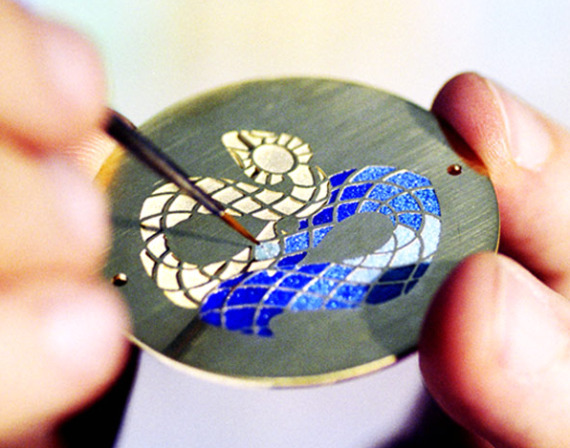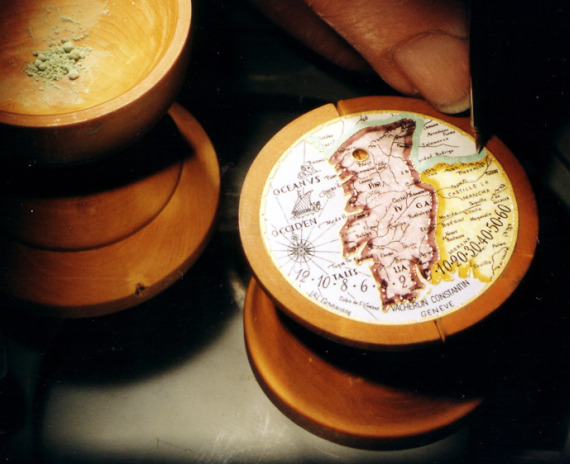
This was a very interesting and informative video (translated to English from French) that recently came out from the FHH about enamel work on watches, and the four various types of techniques that are primarily used for watch dials. Many of us don’t even recognize enamel art on watches – or cannot appreciate what goes into it. It is very tough work done by highly skilled (and patient) master artists who have been doing it for years. To get it just right on a watch dial can take a few tries as there is always risk involved in not only the actual painting, but also the 800 degree plus baking process. Most watches with “paintings” on them utilize enamel. This is because enamel lasts a long time, is hardy, will not fade, and has extremely bold and beautiful looks when done well. There is also the concept that a master worker hand-loved the dial of the watch and now you get to wear it.
Not being an expert on enamel, I can’t go into a lot of detail about it, but here it is in a nut shell. Oh, and you can read more about enamel art on Wikipedia here. It starts with a substrate which is metal, crystal, ceramic, or likewise. Applied to substrate is glass powder, sometimes made into a paint or gel-like form. This glass substance is colored, by use of various chemicals during the creation of the glass. Sometimes the substrate has barrier made in it to create “cells.” Just think about how a stained glass window is made This type of enamel work is called “Cloisonné “. After these cells are made, the artist can apply various colors in each cell or blend colors in each cell. The cells are there to create definitive shapes. Once the enamel is applied it must be “baked” in a high temperature to chemically seal the glass to the substrate. This is why enamel lasts so long and is so hard.

Another part of enamel work is the various type of engraving that is involved. Engraving the metal substrate before the enamel is applied is called “Champlevé,” which is a very common type of enamel work done on watch dials. There each area that is engraved must be baked separately, but the results can be beautiful. There are other types of engravings that can be done. This can be manually done with tools, or via acid solutions. I don’t specifically know whether engravings take place before or after the enamel is baked – or during both times.
Skilled enamel workers can also complete miniature enamel paintings. This is an accumulation of efforts and results in a detailed painting done with enamel that is miniature (watch dial sized). This is often done on the reverse of a watch crystal – so in a sense the painting is done backwards. First, the most intimate details are applied and then colors are placed behind the smaller details. Not all enamel paintings are done in reserve on the back of sapphire crystals, but this is common in these uncommon watches. There are a tons of techniques and what they each share is a remarkably artistic and seemingly impossible outcome that takes your watch from being a mere functional tool to something which is undeniably “art.” One of the reasons that enamel work is hard to do relates not only with the incredible delicacy of the process and small areas to work with, but with the heating process that can change the size and shape – or sometimes color of what the artist has created. There is no going back and fixing it after it has baked – as far as I know. Interesting stuff, and I am looking forward to getting a nice enamel painting watch someday.
Check out the insightful video from The Fondation de la Haute Horlogeire on enamel painting and watches here.
Image credits go to FHH (Fondation de la Haute Horlogerie).

